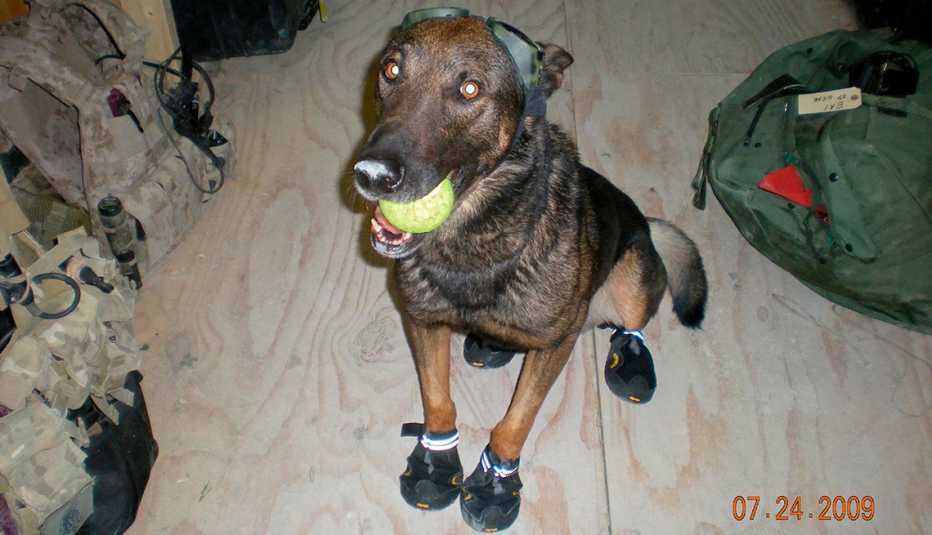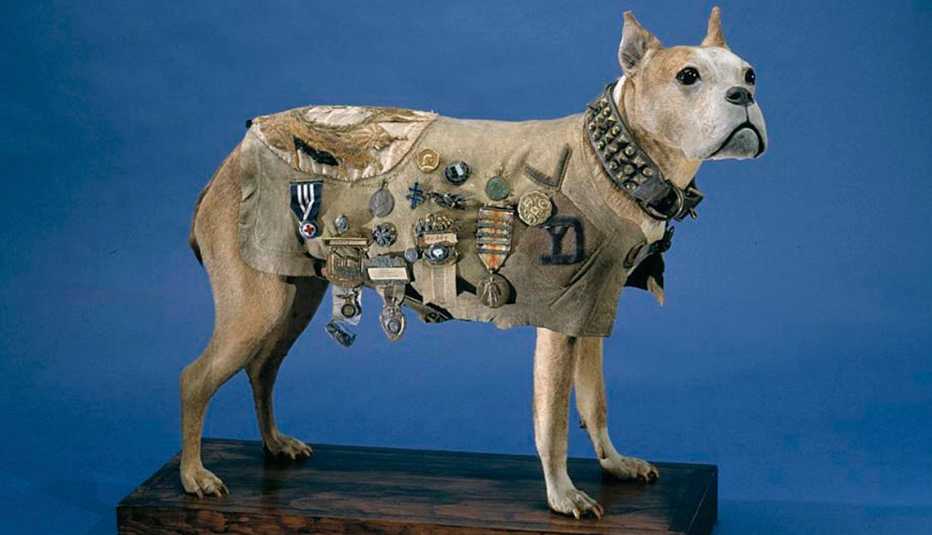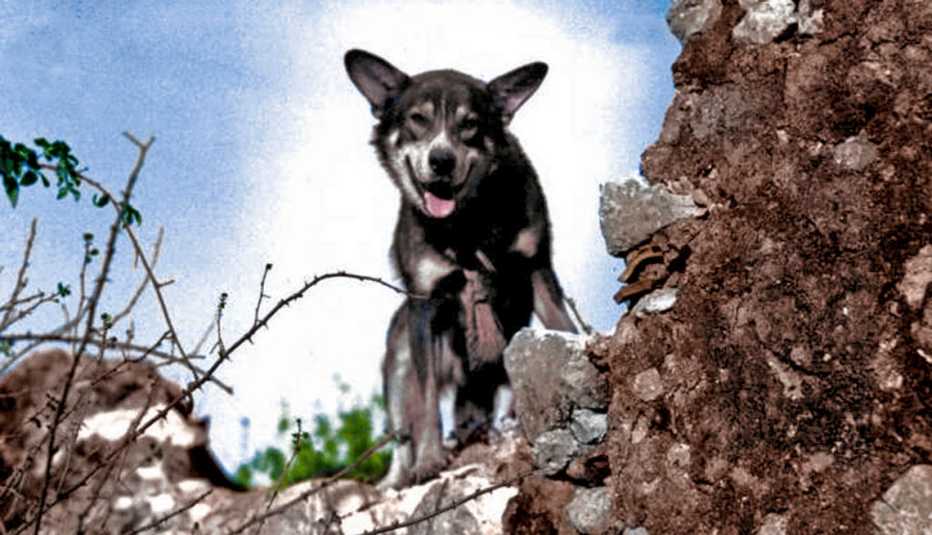AARP Hearing Center


Troops love dogs and often take time out to care for them even in dangerous situations. As a war reporter during the Battle of Fallujah in 2004, I was with 1st Infantry Division soldiers in Iraq clearing houses when they stopped searching for insurgent fighters to round up a litter of puppies.
When canines came in from the wild in prehistoric times and threw their lot in with humans, it was inevitable they would be used in war.


You can subscribe here to AARP Veteran Report, a free e-newsletter published twice a month. If you have feedback or a story idea then please contact us here.
As Michael Lemish noted in his classic War Dogs: A History of Loyalty and Heroism: “Throughout recorded history, dogs have shared our triumphs, defeats, starvation, good times, and bad. … Persians, Greeks, Assyrians and Babylonians all recognized the tactical advantage of war dogs and deployed them in great numbers as forward attacking elements.”
Since then, dogs have also been military messengers, sentries, rescuers, sniffers, companions and mascots. Here are some of the finest four-legged specimens to have served:
Smoky — Yorkshire terrier saw action in Pacific


Bill Wynne, who was serving with the 5th Air Force, bought Smoky from a motor pool sergeant after she was found abandoned in a foxhole in the jungles of New Guinea in February 1944.
The Yorkshire terrier took part in 12 air-sea rescue and photo reconnaissance missions, survived 150 air raids on New Guinea and made it through a typhoon on Okinawa. She would howl when Wynne played his harmonica.
Her finest hour came on the island of Luzon when communication wires had to be laid in a ditch dug across a 70-foot section of a runway that was exposed to aerial bombardment.
Wynne explained in his book Yorkie Doodle Dandy: “Kite string was attached to Smoky’s collar and I set her at one end of the culvert, ordering her to ‘sit/stay;’ I went to the far end and started calling, ‘Smoky, come, come!’ It seemed to take forever, but soon I saw her amber eyes glowing inside the culvert about 10 feet away.”
Smoky went home with Wynne to Cleveland, Ohio, after the war and lived until 1957. Wynne died in 2021 at age 99.
Judy — English pointer became POW after her ship was torpedoed


Born in Shanghai in 1937, Judy, a purebred liver-and-white English pointer, was a Royal Navy mascot in HMS Gnat and HMS Grasshopper in the Far East. In February 1942, Grasshopper was torpedoed and caught fire. Judy was among those who washed up on an uninhabited island.
Judy soon unearthed a lifesaving freshwater spring and was taken with a group of survivors to Sumatra in a commandeered Chinese junk. After a 200-mile cross-country trek, the group was taken prisoner. Judy was hidden under rice sacks and taken to a POW camp.





































































More From AARP Veteran Report
I Wrote the Guidebook for Vets Joining the Federal Government
A Navy veteran worked out how to navigate the complex USAJOBS.com hiring process, so you don’t have to
Moviemaker Honors Great-Uncle Pilot Who Was Killed Saving Comrades
Lt. Royal Stratton died in the Pacific in 1945 as he rescued nine downed fellow airmenFinal Rescue Mission for First American Soldier Into Afghanistan
A Green Beret is now trying to save the Afghan allies he fought alongside after 9/11Here’s What Veterans Should Do About a Bad Back
Get moving, change your posture — and don’t put off decisions